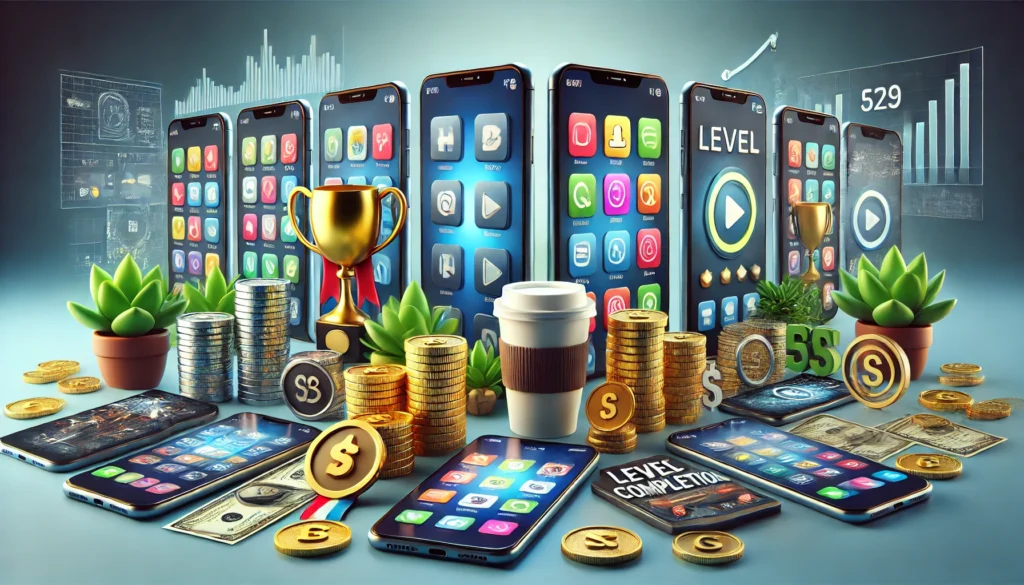In today’s competitive digital landscape, affiliates are constantly seeking innovative ways to engage their audience and increase conversions. One such method that has proven to be highly effective is gamification. But what is gamification? It’s the application of game-design elements and principles in non-game contexts to enhance user engagement and motivation. In this article, we will explore how to boost engagement and conversions through gamification, providing gamification examples and strategies for affiliates looking to maximize their earnings independently.

What is Gamification?
What is gamification? At its core, gamification involves incorporating game-like elements into non-game environments to make activities more engaging and enjoyable. This can include points, badges, leaderboards, challenges, and rewards. By tapping into the human desire for competition, achievement, and recognition, gamification can significantly enhance user experience and drive desired behaviors.
The Psychology Behind Gamification
Understanding what is gamification involves delving into the psychology behind it. Humans are naturally inclined to seek out activities that are fun and rewarding. Gamification leverages this by providing immediate feedback, setting clear goals, and creating a sense of progression and achievement. This psychological approach can transform mundane tasks into exciting challenges, making users more likely to engage and convert.
Key Elements of Gamification
To effectively answer what is gamification, it’s essential to identify its key elements:
- Points and Rewards: Offering points for completing tasks and rewards for reaching milestones.
- Badges and Achievements: Providing visual tokens of accomplishment to motivate continued engagement.
- Leaderboards: Creating a sense of competition by ranking users based on their performance.
- Challenges and Quests: Setting specific tasks that users can complete for rewards.
How to Boost Engagement with Gamification
Now that we understand what is gamification, let’s explore how to boost engagement using these principles. Gamification can transform passive users into active participants, increasing their time on site and interaction with content.
Interactive Content
One effective way to use gamification to boost engagement is by creating interactive content. Quizzes, polls, and surveys can engage users by providing instant feedback and gratification. For example, a quiz that offers points for correct answers can keep users on your site longer and encourage them to explore more content.
Loyalty Programs
Implementing a loyalty program is another powerful gamification example. By rewarding users with points for actions such as visiting the site, sharing content, or making purchases, you can encourage repeat visits and sustained engagement. Points can be redeemed for discounts, exclusive content, or other rewards, creating a win-win situation for both affiliates and users.
Competitions and Challenges
Setting up competitions and challenges is an excellent way to boost engagement. For instance, you could create a leaderboard that tracks user activity and offers rewards for top performers. This not only motivates users to engage more frequently but also fosters a sense of community and competition.
Offerwalls
Gamification works exceptionally well with offerwalls, a strategy where users can complete various tasks or offers in exchange for rewards. One of the best offerwall is from MyLead, providing a diverse range of offers that can easily be integrated into your gamification strategy. By utilizing MyLead’s offerwall, you can incentivize users to complete offers, thus driving higher engagement and conversions.
Gamification Examples in Affiliate Marketing
To illustrate what is gamification, let’s look at some gamification examples in the context of affiliate marketing. These examples highlight how gamification can drive user engagement and increase conversions.
Example 1: Points-Based Rewards System
One of the simplest yet most effective gamification examples is a points-based rewards system. Affiliates can award points for actions such as clicking on affiliate links, making purchases, or sharing content. Users can accumulate points and redeem them for rewards such as discounts, freebies, or exclusive content. This system not only boosts engagementbut also incentivizes conversions.
Example 2: Referral Programs
Referral programs are another great gamification example. By gamifying the referral process, affiliates can encourage users to refer friends and family to their site. For every successful referral, both the referrer and the new user receive rewards. This not only expands your audience but also increases user engagement and loyalty.
Example 3: Interactive Challenges
Creating interactive challenges is an engaging way to utilize gamification. For instance, you could design a month-long challenge where users complete specific tasks related to your niche. Each completed task earns them points or badges, and those who finish all tasks receive a grand prize. This keeps users coming back regularly and increases their interaction with your content.

Practical Steps to Implement Gamification
Understanding what is gamification is just the beginning. Implementing gamification effectively requires a strategic approach. Here are some practical steps to get started:
Define Clear Objectives
Before incorporating gamification, it’s crucial to define what you want to achieve. Are you aiming to increase user engagement, boost conversions, or build brand loyalty? Clear objectives will guide your gamification strategy and help measure its success.
Choose the Right Gamification Elements
Based on your objectives, select the gamification elements that best suit your needs. For example, if you want to boost engagement, consider implementing leaderboards and competitions. If your goal is to increase conversions, a points-based rewards system or offerwalls might be more effective.
Integrate Gamification Seamlessly
For gamification to be effective, it needs to be seamlessly integrated into your site. Ensure that the game-like elements enhance the user experience rather than distract from it. The design should be intuitive, and the rewards should be appealing and relevant to your audience.
Monitor and Adjust
Once you’ve implemented gamification, continuously monitor its performance. Use analytics to track user engagement, conversion rates, and other key metrics. Based on the data, make necessary adjustments to optimize your strategy. This iterative process ensures that your gamification efforts remain effective and aligned with your goals.
Conclusion
In conclusion, understanding what is gamification and how to implement it can be a game-changer for affiliates looking to increase engagement and conversions. By incorporating interactive content, loyalty programs, competitions, and offerwalls, affiliates can transform their user experience and drive higher participation and sales. The key is to strategically choose and integrate the right gamification elements, continuously monitor performance, and adjust the approach as needed.For affiliates aiming to maximize their earnings, leveraging MyLead’s offerwall can be a highly effective tactic. By incentivizing users to complete offers through a gamified experience, affiliates can significantly boost their engagement and conversions. Start exploring the potential of gamification today and see how it can revolutionize your affiliate marketing strategy. Check out MyLead’s offerwall to get started.
